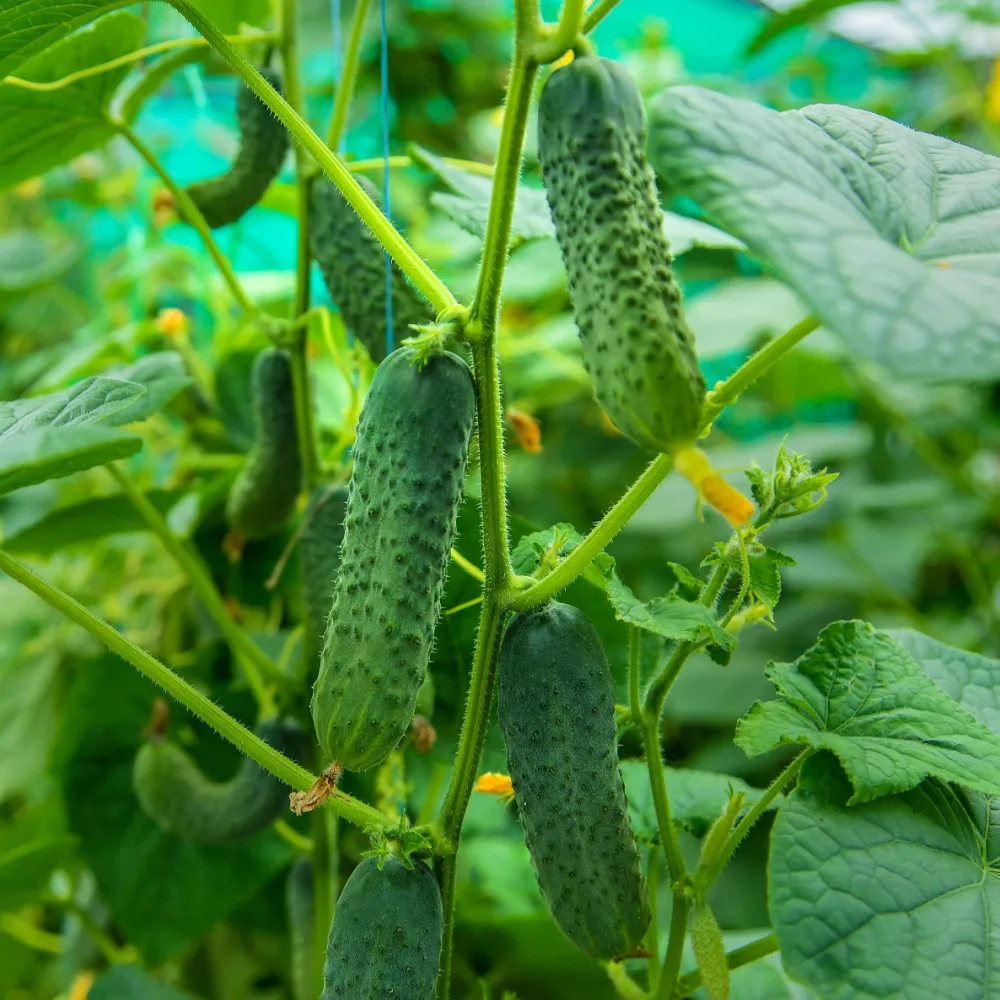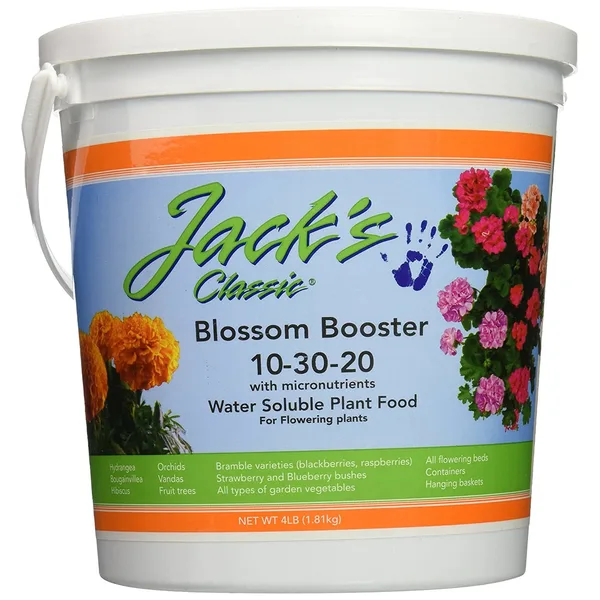It’s a question that floods our email inbox every year in late spring – why do my cucumber plants have loads of blooms – but no cucumbers?
If you’ve been checking on your cucumber plants every day and are starting to wonder why there are tons of bright yellow blooms but still no cucumbers forming, you’re not alone. One of the most common concerns for gardeners in late spring to early summer is seeing all those flowers appear on their cucumber plants – only to be disappointed when no fruit follows.
This issue can be confusing and frustrating. Especially when your plants look healthy and are blooming like crazy. But the good news is, in most cases, it’s completely normal. And this is more true than ever especially early on in the growing season.

Cucumber plants are unique in how and when they produce fruit, and it all starts with understanding their flowering process. Here is a look at a few major causes why your cucumber plants might be full of blooms but not yet forming cucumbers. And more importantly, what you can do to help change that.
Why Cucumber Plants Have Blooms But No Cucumbers
Cucumber Plants Produce Two Kinds of Blooms
To understand what’s going on, the first thing to know is that cucumber plants don’t treat every flower equally. In fact, they produce two different types of flowers – male and female. And only female flowers can develop into cucumbers.
Male flowers are the first to appear on the plant, often in large numbers. They are important for pollination, but they don’t grow into cucumbers. Their role is to produce pollen for the female flowers, which show up a little later.
Female flowers, on the other hand, are the ones that develop into fruit. But only if they get properly pollinated by male flowers. You can tell a female flower apart easily by looking closely – it will have a small, cucumber-shaped bulge right behind the bloom. That’s the start of the fruit.
If that flower gets enough pollen from a male flower, the fruit will start to grow. If not, it will shrivel and fall off. This is where many gardeners get concerned: early in the season. There are usually far more male flowers early on, and very few female flowers.

This can lead to a period where blooms are everywhere, but not a single cucumber is forming. Thankfully, it’s a natural phase in how cucumber plants develop.
Why So Many Male Flowers First?
Cucumber plants start out by producing mostly male flowers for a very simple reason, they’re getting ready for reproduction. The plant is building up pollen in advance of when the female flowers start to appear. This ensures that when the female blooms do arrive, there will be plenty of pollen available to get the fruit going.
Typically, this early male flower stage lasts for about two to three weeks. Most cucumber varieties will begin to produce both male and female flowers by week four to six after planting. That’s when you’ll see a more even mix of flowers, and cucumbers will begin to form.
This early phase can be misleading, especially for new gardeners. But once the female blooms arrive in larger numbers, cucumbers tend to appear in rapid succession- often within just a few days of pollination. There are, however, other reasons your plants might not be producing.
A Few Other Reasons You’re Cucumber Plants Might Have Blooms And No Fruit
While a lack of female flowers is the most common reason for blooms without fruit early on, there are a few other important factors that can also prevent cucumbers from forming. Even if both male and female flowers are present.
#1 – Poor Pollination
Even when you have both types of flowers, cucumbers won’t form without good pollination. Cucumbers are not self-pollinating. They instead rely heavily on pollinators like bees and butterflies to carry pollen from male flowers to female ones. Without this transfer, the female flower cannot develop into a cucumber.
In recent years, poor pollination has become more common due to lower bee populations, especially in urban and suburban areas where flower diversity might be limited. Even in gardens that are full of flowers, weather conditions like wind, cold temperatures, or excessive rain can keep pollinators away.
You can improve pollination by attracting more bees and pollinators to your garden. Planting flowering herbs like basil and dill near your cucumber plants is a great start for more blooms and fruit. You can also try hand-pollinating.
To do this, simply use a small paintbrush or cotton swab to transfer pollen from a male flower to a female flower. Do this in the morning when the flowers are open, and you’ll usually see results within a few days.

#2 – Too Much Rain Or Moisture
Excess rain or heavy watering can cause several issues for cucumber plants. While cucumbers need consistent moisture, too much of it, especially in combination with poor drainage, can slow the plant’s development.
Heavy rainfall can also wash away pollen and keep pollinators from flying. And if the soil becomes waterlogged, roots may begin to rot, or the plant may start to struggle taking up nutrients.
To help this, make sure your cucumber plants are in well-draining soil. Raised beds or mounded rows help avoid pooling water. If you’ve had heavy rain, hold off on watering until the soil dries out a bit. You can also help prevent splashing and fungal problems by mulching around the base of the plants.
#3 – Incorrect Fertilizer Use – Cucumber Plants With Blooms And No Fruit
Fertilizer is important for cucumber growth, but using the wrong kind at the wrong time can actually lead to more problems. Especially when it comes to flowering and fruiting.

If your cucumber plants are growing big and leafy but still not producing fruit, you may be using a fertilizer that’s too high in nitrogen. Nitrogen helps produce lush green leaves, but it can prevent flowering if it’s too dominant in the nutrient mix.
To form flowers and fruit, cucumbers need a fertilizer that’s higher in phosphorous (P) and potassium (K) than nitrogen (N). These nutrients help the plant develop blooms and support fruit production. Affiliate Link: Jack’s Classic 12-15-30 Veggie Feed Water-Soluble Fertilizer with Micronutrients
A good ratio to look for on the label is something with anywhere from two to five times the amount of phosphorous and potassium to nitrogen. Also, avoid over-fertilizing, as too many nutrients can cause cucumber plants to become overgrown – with no blooms or fruit! See: How To Fertilize Young Cucumber Plants – Get Your Cucumbers Growing Fast!
#4 – Lack of Sunlight
Last but not least, when cucumbers have lots of blooms and no cucumbers, it can be sunlight that is the issue. Cucumbers are sun-loving plants. If they’re growing in a shaded spot or in an area that only gets a few hours of sun per day, they’ll struggle to produce fruit even if flowers are present.
Without at least 6 to 8 hours of direct sunlight per day, cucumber plants can’t make enough energy to support fruit growth. This often leads to plants that flower but never follow through with fruiting.
Plant cucumbers in the sunniest spot you have. If they’re already planted and you can’t move them, consider trimming back any nearby trees or overhanging plants that might be blocking the light. In container gardens, simply move the pots to a brighter location.
So if your cucumber plants are blooming without producing any cucumbers yet – take a breath. It’s very likely that your plants are just going through their natural early cycle, building up a supply of male flowers and slowly easing into female production.
With a little time, good pollination, and the right care, you’ll likely see those little cucumbers forming soon and growing fast!
This Is My Garden
Follow Our Facebook Page For Great Gardening Tips And Advice! This Is My Garden Facebook Page
This Is My Garden is a garden website created by gardeners, for gardeners. Jim and Mary Competti have been writing gardening, DIY and recipe articles and books and speaking for over 15 years from their 46 acre Ohio farm. They publish three articles every week, 52 weeks a year. Sign up today to follow via email, or follow along!
